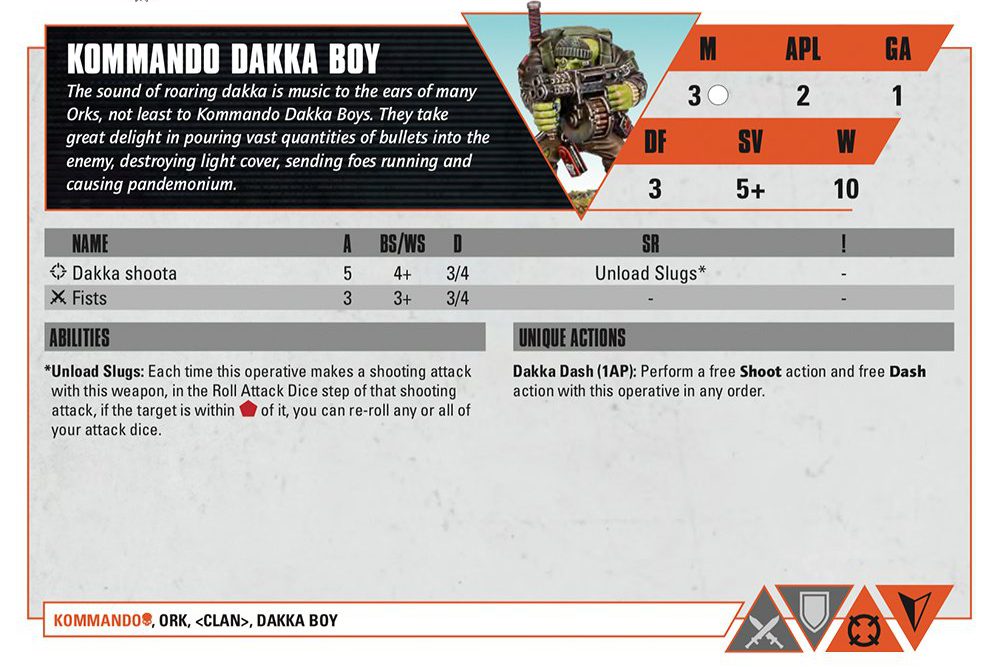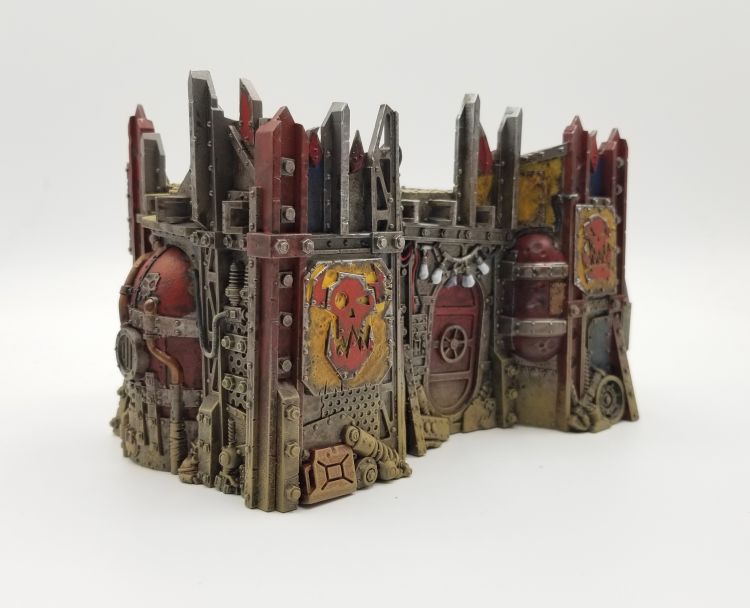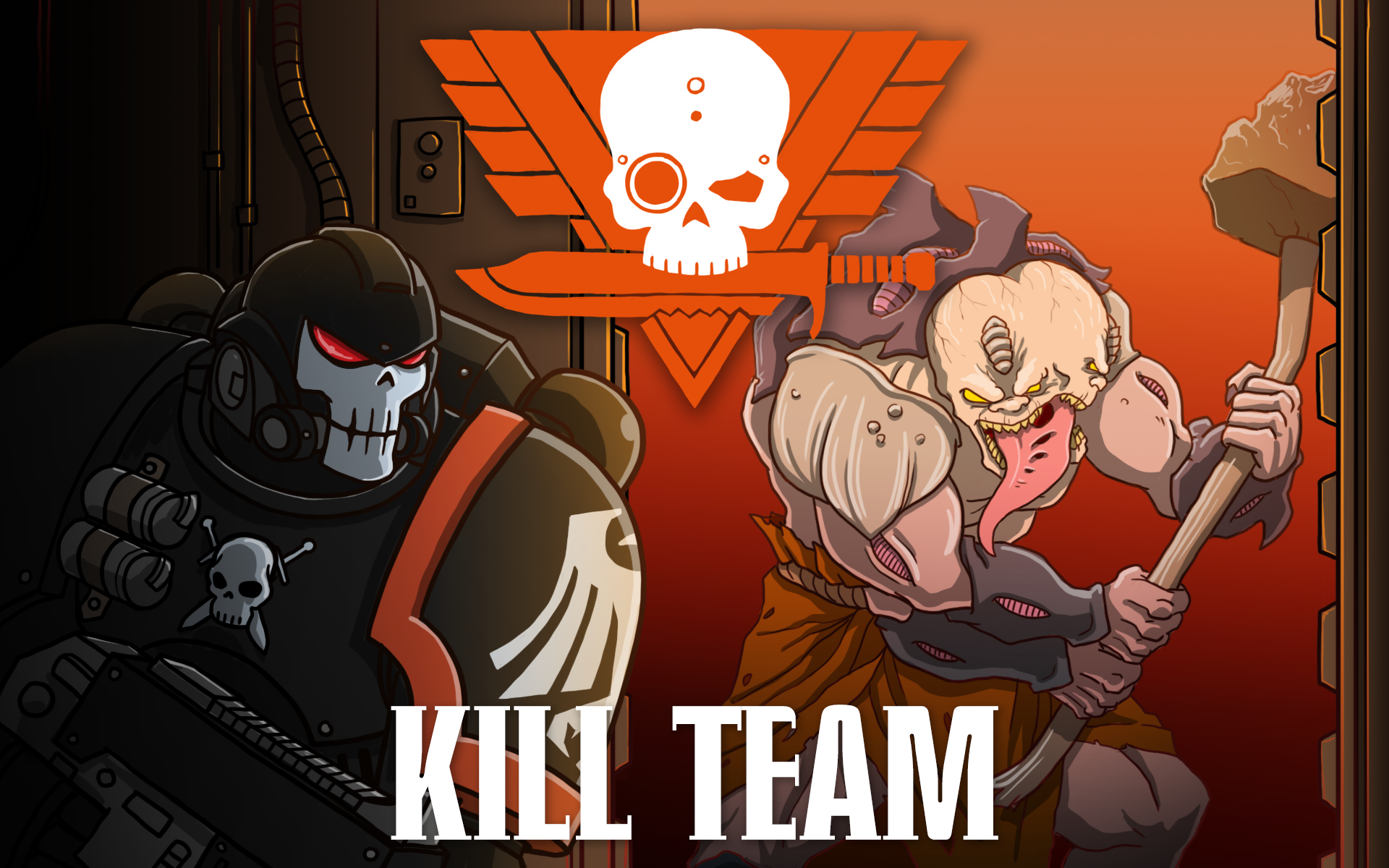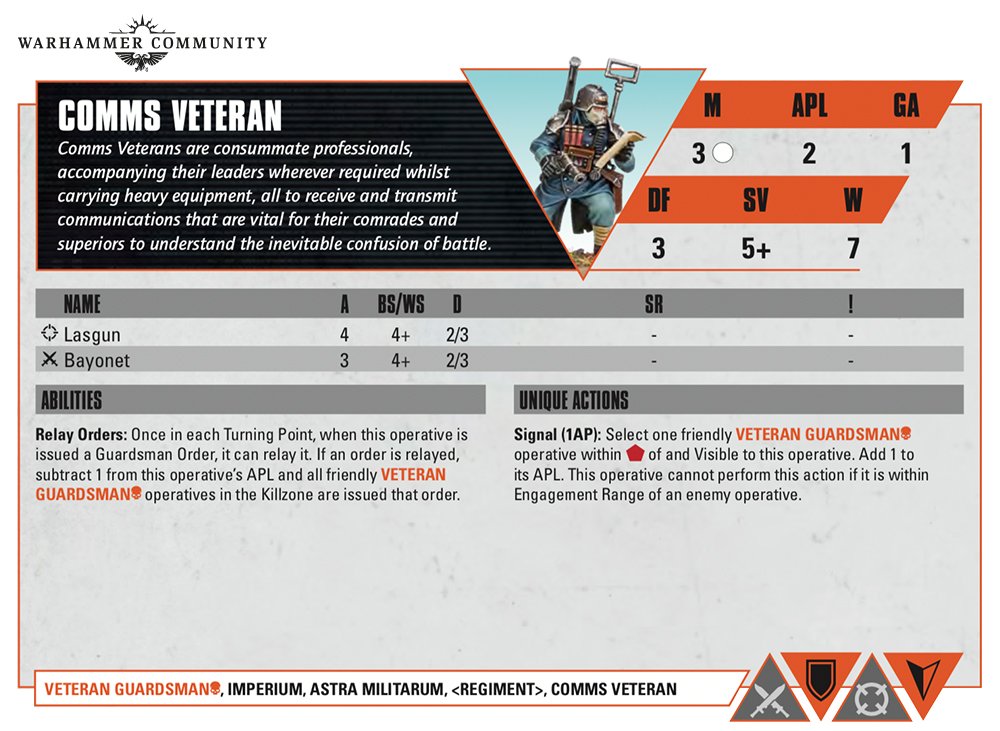Although we’ve talked at length about the new Kill Team 2.0 in our review, there’s a second, rather hefty, book included in the new box and that’s the Octarius Campaign book. In this review we’ll be diving deeper into Octarius and its contents, talking about what it means for Kill Team 2.0, and whether it’s a worthwhile add-on to make picking up the new starter box worth it. There’s enough here that it was worth adding a second article to cover it all, particularly since we’re looking at a two-week lead time for pre-orders on Kill Team.
If you missed our initial review of the new Kill Team, you can find it here.
And before we dive in, we’d like to give a “thank you” to Games Workshop, who provided us with copies of the new Kill Team Octarius boxed set for this review.
What’s in the Book
Although not necessarily positioned as such up to this point in GW’s marketing materials, the Octarius book is very much written as a full campaign expansion to the base Kill Team rules, with new factions, missions, and requisitions.
Included in the book are:
- Backstory and information about the conflict in the Octarius sector
- Fluff add-ons for Kommandos and Veteran Guardsmen squads, with name generators, backstory tables, and tables for quirks and bases
- Rules for Veteran Guardsmen Kill Teams
- Rules for Kommandos Kill Teams
- Narrative Campaign rules for both teams, with Rare equipment, Assets, Requisitions, and Spec Ops
- Rules for Killzone: Octarius terrain
- Nine narrative play missions designed to use the Octarius terrain
On the whole there’s more here than we expected, particularly compared to the pamphlets that constituted Killzone releases in the prior iteration of Kill Team.
How Does Octarius Fit into the Larger Kill Team 2.0?
In a lot of ways, this book feels like a preview of things to come for Kill Team. The Octarius book lays out what future expansions might look like, introducing us to a pair of bespoke kill teams with their own faction rules and quirks, with some additional rules for whatever terrain comes packed in the box and some extra missions and narrative play rules.
In that sense, it’s easy to picture this as a model for future expansions, where we’re given new, more bespoke kill teams as their own standalone factions rather than adding to the options available to other factions. In that sense, we might see new kill teams that look more like Underworld warbands than new units for 40k. It’s also easy to see how this might tie into future 40k campaign settings (where factions are defined in advance), and how it might be used to re-introduce older teams such as the Gellarpox Infected or Elucidian Starstriders (at least, we hope to see them show up again somewhere – those are beautiful models!).
The Factions of Octarius
Octarius introduces us to two new factions made from models that can ostensibly be used in other factions: Veteran Guardsmen, which use the new plastic Death Korps of Krieg models, and Kommandos, which use the new plastic Ork Kommandos models. Each of the factions comes with a wide variety of specialist models with their own unique rules, a set of faction specific Tac Ops (basically secondary objectives), and equipment you can dole out to better deal with specific enemies.
Veteran Guardsmen
The veterans of Krieg aren’t messing around. In addition to the 10 models they’ll field, they also get to choose one of two Ancillary Support Options. The first of these is just getting 4 more Trooper Veterans to take you up to 14 bodies, but that’s honestly pretty boring when the alternative is calling in off-board artillery strikes. Rather than taking the extra models, you can opt to pick two Tactical Assets from a list of four that includes fun things like strafing runs, and can use each once per game. In addition to being solid ranged options, you play them in lieu of an activation, letting you delay a key model’s attacks until you’re ready for them.
Of course, off-board firepower isn’t the only thing they bring to the table. The Sergeant Veteran has a solid set of options in the plasma pistol and power weapon, and while there are other choices you could take here, there’s not really a reason to do so from a rules perspective (though these profiles will let you use most other Sergeant model loadouts in a Veteran Kill Team). Your Sarge’s real value, though, is in their ability to issue Guardsman Orders. Once per turn in the Strategy Phase you can choose to issue one order with your Sergeant. These are essentially Strategic Ploys that affect every friendly model within 6” of the Sergeant, but don’t cost CP. Your options here are simple, but useful: Either add 1” to your team’s Movement characteristics, or re-roll results of 1s in either shooting attacks, melee attacks, or defense rolls.
That limitation isn’t as bad as it sounds, though, thanks to the Comms Veteran. This model can relay any order it receives to the rest of your Kill Team at the cost of 1APL. As a bonus, it can spend its other action to increase another model’s APL by 1 for the round if it doesn’t have anything better to do. And while the Sarge is the only model that comes stock with the Guardsman Orders rule, all is not lost if you lose that piece: The Confidant Veteran is your Sergeant’s Second in Command, and can take over as the Leader and issue orders if their Sarge is killed. In the meantime, if the Confidant isn’t the Leader, it can choose a friendly model to activate after it does, letting you line up key actions in sequence with your team.
Of course, if you’re just looking for firepower, the Guardsman bring plenty. You’ll want to include all four Gunner Veterans in your roster to choose from based on the game. The meltagun and plasma gun will probably be your go-tos in most matchups, but don’t sleep on the grenade launcher: having the choice between Blast and AP1 rules is a great tool. Your other ranged damage dealer is the Sniper Veteran, who does exactly what you’d think – their long-las may only have a 3/3 damage profile, but its critical hits deal 3 mortals. And thanks to its Sniper special rule, this model can shoot even if it’s in Conceal orders so long as it doesn’t move.
Of course, guardsmen can’t just shoot at their enemies, they also need to hold the line against anyone who’s able to move across the table. That’s where the Bruiser Veteran and Hardened Veteran come in. The first packs a trench club with the Stun critical effect, then also gets to ignore the damage from a single normal hit when it fights in combat. These effects may not be enough to win outright against dedicated melee specialists, but the ability to negate two normal hits per fight will keep them in the fight longer. The Hardened Veteran, on the other hand, packs a bit more punch: their bionic arm hits with a 4/5 damage profile, making them that much more threatening against all targets. And they’ve also got what it takes to get to where they want to be with a 5+ to ignore incoming damage. Between these two and the Medic Veteran, who can heal 2d3 wounds per turn and keep a friendly model from being incapacitated once per game, you can put up a solid line to protect your more vulnerable ranged damage dealers.
You’ve got three more specialists to pick from: the Spotter Veteran, who can spend its activation to allow a nearby friendly model to treat an enemy it can see as though it had the Engage order; the Zealot Veteran, who can inspire their allies to greater feats of strength in combat; and the Demolition Veteran, who can plant mines, then detonate them to deal grievous damage to anyone foolish enough to stand close to one. Rounding out the Kill Team are the Trooper Veterans, who mostly aren’t much to write home about, but do come with GA 2, letting you bring a few extra models without having to worry about giving up a ton of overwatch shots.
The equipment options here are cool. For 2EP, a model can take a Trench Shovel to dig a trench before the game, then benefit from Light Cover wherever they are until an enemy gets right up on them or they move for any reason. You can also give a model a Chronometer for 3EP, which lets you re-roll the initiative dice once per game. These options provide some cool and flavorful options that also give you access to some new tactics that wouldn’t be available to you otherwise.

Kommandos
The Kriegers aren’t going to have an easy time of it though – the Orks’ Kommandos are honestly terrifying, thanks to their Throat Slittas rule. This lets them take Charge actions while under Conceal orders, letting you set up plays that are that much more difficult for your opponent to respond to: rather than having to weigh the value of removing an enemy piece in melee against the possible loss of your operative to your opponent’s entire remaining kill team, you can instead charge to a position where you’re in cover, remove whatever’s annoying you, then chuckle softly to yourself as your opponent has to move out of position to respond to this new development.
Their Strategic and Tactical Ploys back up this aggressive playstyle. Sssshhhh! And Skulk About give you bonuses to operatives with the Conceal order. The former lets each Kommando that’s either out of sight of any enemies or in the Conceal order make a free dash, while Skulking About lets your Concealed Kommandos get a free normal save as though they were in cover, even if they get caught out. Once you’re ready to get started, Waaagh! will let you upgrade a normal hit to a critical any time you retain more than one normal hit, and Krump ‘Em! gives you a free Fight action at the end of the Firefight phase. Of course, fighting in melee is risky, and Kommandos have an incredible Tactical Ploy to keep them around longer: Just A Scratch costs 1CP and lets any of your operatives ignore damage from a single attack dice.
Your Kill Team will include 10 operatives: one Kommando Nob and 9 more from the list of options. The Nob is mandatory, which seems redundant as you’re going to want him anyway. In addition to be harder to kill thanks to his 3 additional wounds and 4+ save, he can choose between a pair of nasty close combat weapons in the big choppa or the power klaw and gets to add 1 to the APL of a single Kommando operative within 6” every time he activates. This isn’t an action: he just does it for free.
The remaining Specialist Boyz are all pretty solid. The Breacha Boy’s potent melee attacks gain the Brutal rule on the charge, and his target will have trouble avoiding it thanks to his ability to Kool-Aid Man his way through any wall up to 1” thick. The Slasha Boy is your other melee specialist, sporting a weapon with the Relentless trait and trading the Breacha’s surprise factor for the ability to dish out mortal wounds on a 4+ each time it loses wounds in melee but doesn’t go down. For ranged firepower, you can choose from the Dakka Boy, who can combine a Shoot and Dash action in any order for 1AP and gets to re-roll his attack dice if he can close to 6” before unloading; the Rokkit Boy, whose rokkit launcha comes with AP1, the Splash 1 critical rule, and re-rolls attack dice if he hasn’t moved; and my personal favorite, the Snipa Boy, who uses a “scoped big shoota.” It may look mediocre at first with a 2/2 damage profile, but don’t be fooled: between its ability to dish out 2 mortals for every crit and the choice of being able to shoot with the Conceal order or to put 4 dice into every enemy within 2” of its target, this gun can be pretty nasty. Combine with the Sneaky Git Tactical Ploy to deploy him somewhere advantageous and watch the havoc.
Rounding out the Boyz are the Comms Boy, who can score mission objectives for 1 fewer APL or spend an action to give another model +1 APL for the turn, the Burna Boy, whose burna is outstanding against hordes of grouped-up weaker models, and the standard-issue Kommando Boy, who’s really there for situations where one of the other Boyz isn’t a flatly better choice – burnas won’t get much done into Space Marines, so why not bring someone with a choppa?
The real star of the show here, though, is the Kommando Grot. It might be small, and it might be terrible in combat, and it might die of fright if a stiff wind carries the scent of something that might be an enemy operative anywhere in its general direction, but it’s honestly one of the most useful pieces in the entire list. Why? Two reasons: first, it’s small and can’t go on engage orders, so it’s damn near impossible to line up a shot that would make it a legal target. Second, and more importantly, though, it’s got a grappling hook.
No, seriously, it’s that good – rather than moving, you can spend 1AP to choose a point on the map it can see and then just move the Grot an infinite distance as though it could fly to anywhere within 1” of that point. Got an objective on top of a building you’d rather not waste 3 turns climbing towards? Grappling hook. Need a third model near your opponent’s deployment zone to score Get Stuck In? Grappling hook. Messed up your APL calculation and need to throw 2 more APL on an objective to score it? You guessed it: grappling hook.
And what’s a Kill Team without a mascot? Terrible, that’s what. To solve that problem, you can bring a Bomb Squig, which is exactly what it sounds like. It can’t take Conceal orders, and it’s nearly as easy to kill as the Grot, but its bite is as dangerous as a choppa. Oh, and it’s rigged to explode, and has a chance to blow up when it dies. If your opponent makes the mistake of letting this thing close on them, it’s going to do work, so don’t expect it to survive long. On the other hand, every shot it soaks up is one that’s not into your boyz, so that’s a job well done. Just be careful you don’t get caught up in the explosion yourself.
If you need some additional mobility in your kill team, feel free to give one of your models a Climbing Rope. It’s not as useful as the grot’s grappling hook, but it lets you move up and down terrain with ease. And if you need some extra help getting across an open section of the board so you can get stuck in, 3EP will buy you a Smoke Grenade, which blocks line of sight within 2” of a location of your choice within 6” of the model that’s carrying it.

Narrative Play
Rather than giving us full rules for an Octarius campaign, the book instead presents us with Spec Ops and campaign rules for the book’s two factions. It’s an interesting take, and further expands on what the Core Rules have to offer in the way of Narrative play. The Spec Ops rules for Veteran Guardsmen and Kommandos here give you Battle Honours that the squads can earn, Rare Equipment they can be outfitted with, Assets to add to your Base of Operations, Requisitions for your team, and two Spec Ops you can choose for your team. If you want to know more about Spec Ops and Narrative Play generally, you can find that in our review of Narrative Play, which is also out today.
Let’s do a quick run through of these:
Battle Honours
Battle Honours are just like they are in Crusade play for Warhammer 40k. Want your Guardsman to be a Siege Specialist? You can do that, and one of their ranged weapons gains the No Cover special rule. Kommandos can do similar, and my favorite of these is Thievin’ Git, which gives your operative a free piece of Equipment before the battle from your stash. Each faction has 6 Battle Honours to choose from or roll for.
Rare Equipment
The Crusade Relics of Kill Team, Rare Equipment gets added to your team’s stash, from which you can retrieve it before battles to add to your team during the pre-game equipment step. My favorites among these are Vid-Capture Relay, which lets a Guardsman Comms Operative perform its Signal action to boost another operative’s APL from anywhere on the table, and Fungal Brew, which removes a Kommando’s Battle Scars and prevents them from being injured or killed during and after the battle.
Assets
Upgrades for your Kill Team’s base, Assets give you benefits but add them as bonuses for your whole team. The Kommandos’ Loot Hoard lets grenade-equipped operatives lob two grenades per game rather than one, and the Veteran Guardsmen’s Preliminary Bombardment lets you call in a preliminary bombardment before the teams are set up, damaging a terrain feature and preventing enemy’s from setting up within 1” of it.
Spec Ops
Finally we come to Spec Ops, which are like mini narrative arcs for your Kill Team to work through as you run them in a campaign. Each Octarius faction has two custom Spec Ops to choose from. The Veteran Guardsmen’s Grand Offensive sees them looking to break the deadlock in a larger battle by striking at the weak points in the enemy lines. It has two phases, which see you competing games in which you score VP for specific objectives in the first phase and Planning a banner in the second to signal your team’s success to the larger army.
For Kommandos there’s the Rampant Destruction Spec Op, which has you planting explosives to blow up and disrupt an enemy supply network behind enemy lines. Phase one of this Spec Op has you completing games in which you score the Blow it Up! Or Sabotage! Objectives, followed by phase two where you need to get behind enemy lines.
Complete your Spec Op and you can get a host of benefits, including Requisition points, in-game bonuses, XP, and Equipment.
Killzone: Octarius
After an entire wasted edition of pointless add-on rules for terrain boxes, Kill Team 2 finally Gets It with the Octarius terrain. The Killzone rules here basically just tell you what traits each terrain feature in the box gets – Barricades have the Light and Traversable traits – with some limited rules for the Scrap Pile that lets you scramble or charge over the feature if you’re next to it when you move. Simple and elegant. Great job on this one, lads.
Missions
The Octarius book provides nine Narrative Play missions to choose from, and all of them use the Octarius Killzone terrain in various layouts, and they really take advantage of the new terrains’ ability to be fit together in different ways and form a single, large building. My favorite of these is Evac Inbound, which sees one team fighting a desperate battle to fend off enemy forces until reinforcements can arrive.
Final Verdict
Condit: These Kill Teams are incredibly cool. The Kill Teams in the Rogue Trader set from the last edition weren’t particularly inspiring from a rules perspective, but these two couldn’t be any more different. Both have a lot of great options and some cool objectives and campaign upgrades besides. If the options we’re seeing in this book are a sign of what’s to come with future Kill Team releases, we’re excited to see what’s coming down the pipe.
Rob: These are definitely great, and I like the precedent they set for more Warcry-like teams, with less flexibility in models and more bespoke rules. This makes me excited that we’ll see rules for things like a Gaunt’s Ghosts Kill Team in an upcoming issue of White Dwarf. The Kommando kill team absolutely rips, and I agree that the Grot is the best model in the game. It’s such a cool concept. If you want the models in either team, the rules for them are fun and compelling.
Have any questions or feedback? Drop us a note in the comments below or email us at contact@goonhammer.com.



